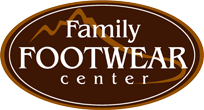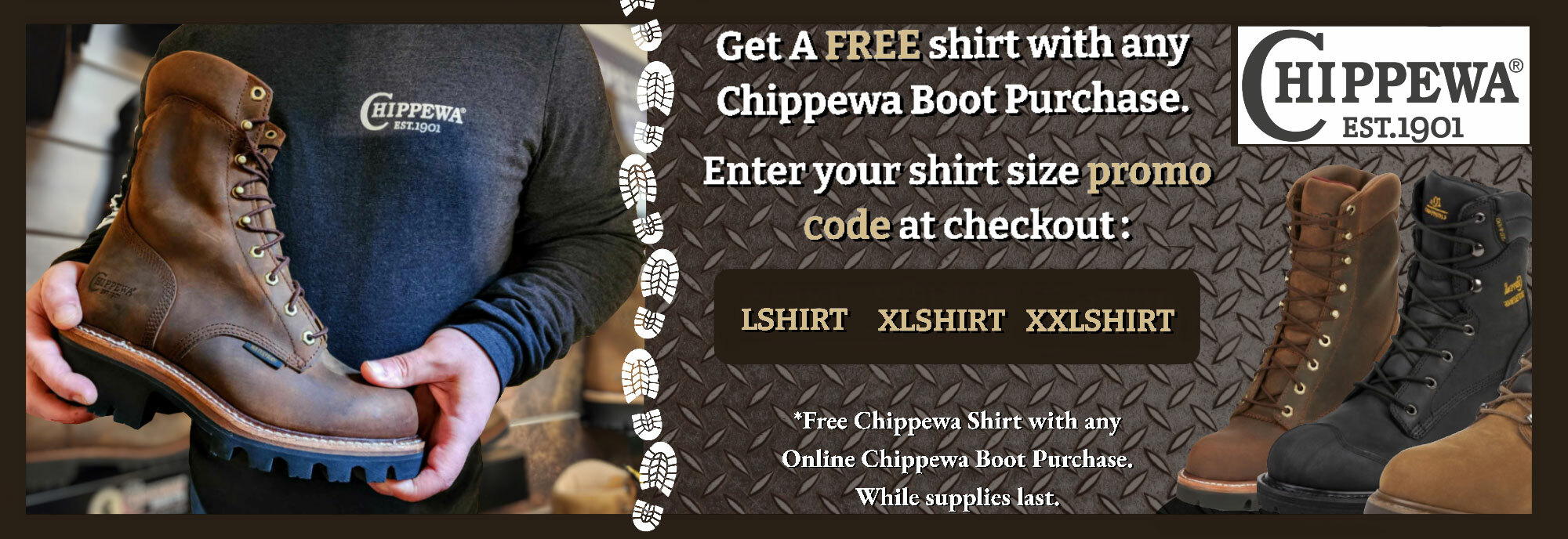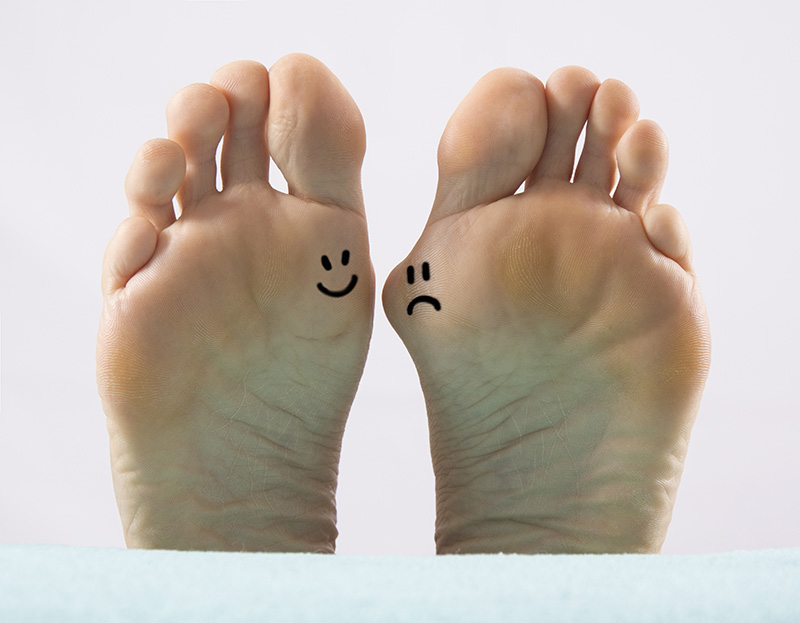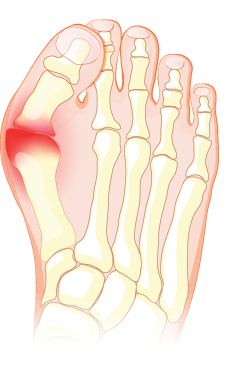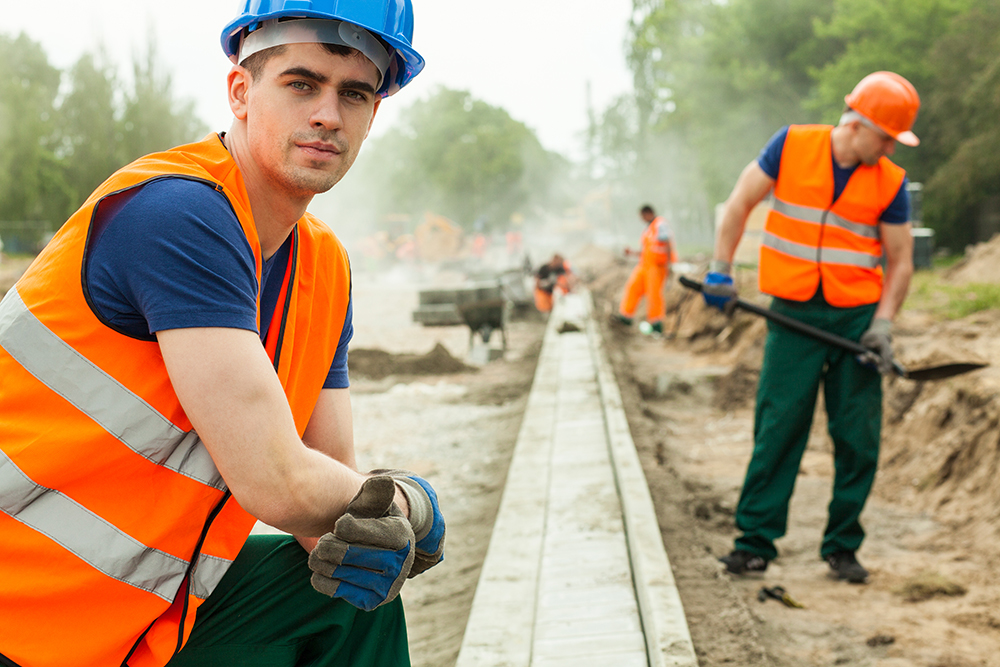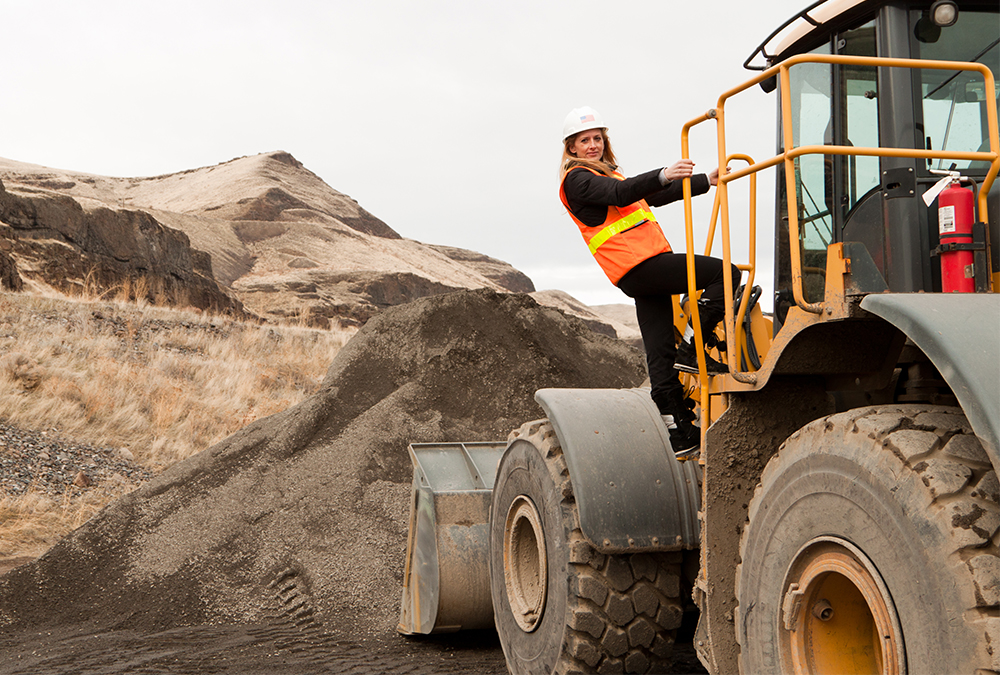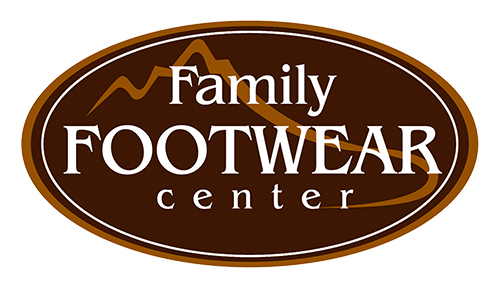What is a Foot Bunion? | Expert Guide to the Best Shoes for Bunions
Posted by Cara Spindler on Jul 19th 2023
What is a Bunion? | Expert Guide to the Best Shoes for Bunions
by Cara Spindler
What is a Bunion?
Thousands of people each day search the internet to ask the question: "What's A Bunion?"
Bunions are a very common foot ailment. In fact, they are so common that there are more than 3 million cases reported every year, just in the U.S.A. alone.
The first known use of the term Bunion was circa 1718, so it is a condition that the medical community and the general public have been aware of, for a very long time.
According to Merriam-Webster's online dictionary, the definition of a foot bunion is:
...an abnormal deviation of the big toe away from the midline of the body, or toward the other toes of the foot, that is associated especially with the wearing of ill-fitting shoes."¹
While this is partially the case, it is always best to define any health condition by also looking at its medical definition.
According to Gordon Weller, D.P.M., Orthopedic Surgery, Mayo Clinic, "bunions often occur in tandem with Hallus Valgus,"² so it is important to understand just what this condition is.
Hallux Valgus is the Medical Condition that Causes Foot Bunions
The Hallux Valgus is responsible for the most common type of foot bunions. It has actually been defined by podiatrists, and their medical community, as a condition of the bones, that affects the largest toes. It is this condition that leads to the development of bunions on the feet.
Let us break down the words Hallux Valgus to understand its Medical Definition:
Hallux: the innermost digit of the hind, or lower limb, which in a human is the big toe
Valgus:a slanted displacement of part of a limb away from its natural midline
Illustrated above:
The big toe is no longer straight, but leans abnormally inward.
Hallux Valgus displaces the big toe and over time the slanting of the joint causes it to bend farther inward, towards the middle of the foot. In more progressed cases, the big toe may even cross directly over the other toes.This results in the bony joint at the base of the big toe to jut outward, off of the side of the foot.
Bunions on the Feet - How they Develop
Bunions start out as small, unsightly bumps on the sides of the feet, at the base of your largest toes.
These protruding bumps become enlarged overtime by the pressure, or tightness, inside of your footwear, as the joints at the base of the toes push up against the walls of your shoes. In the beginning stages of developing bunions, you may only feel minor pain or discomfort in the area of the toe joints when standing, walking or running.
Many people who begin to develop bunions consider them to be nothing more than a cramped nuisance within their footwear. And because bunions start out as nothing more than a comfort issue, most people will just ignore them, or go out and simply purchase bigger shoes. They do not realize the serious repercussions of having bunions until much later, after they have progressed and become much worse. Eventually, their bunions will become visually noticeable and painful, making them much harder to ignore.
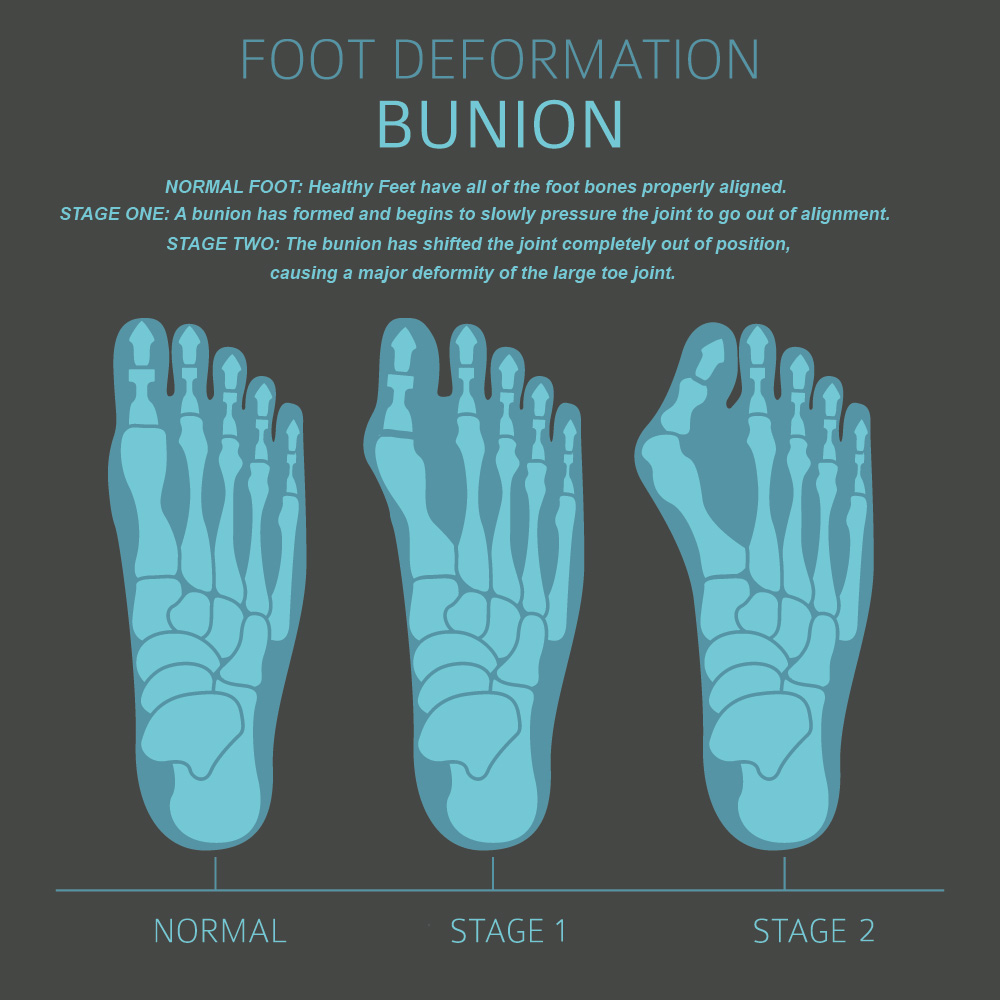
What is a Tailor's Bunion?
A Tailor's Bunion is a smaller version of a traditional bunion.
However, instead of affecting the base joint of the largest toe, it develops at the base joint of the smallest toe, on the outside of the foot. This joint is the 5th Metatarsal's (MTP) joint, which is located at the base of the littlest toe, commonly called the pinky toe.
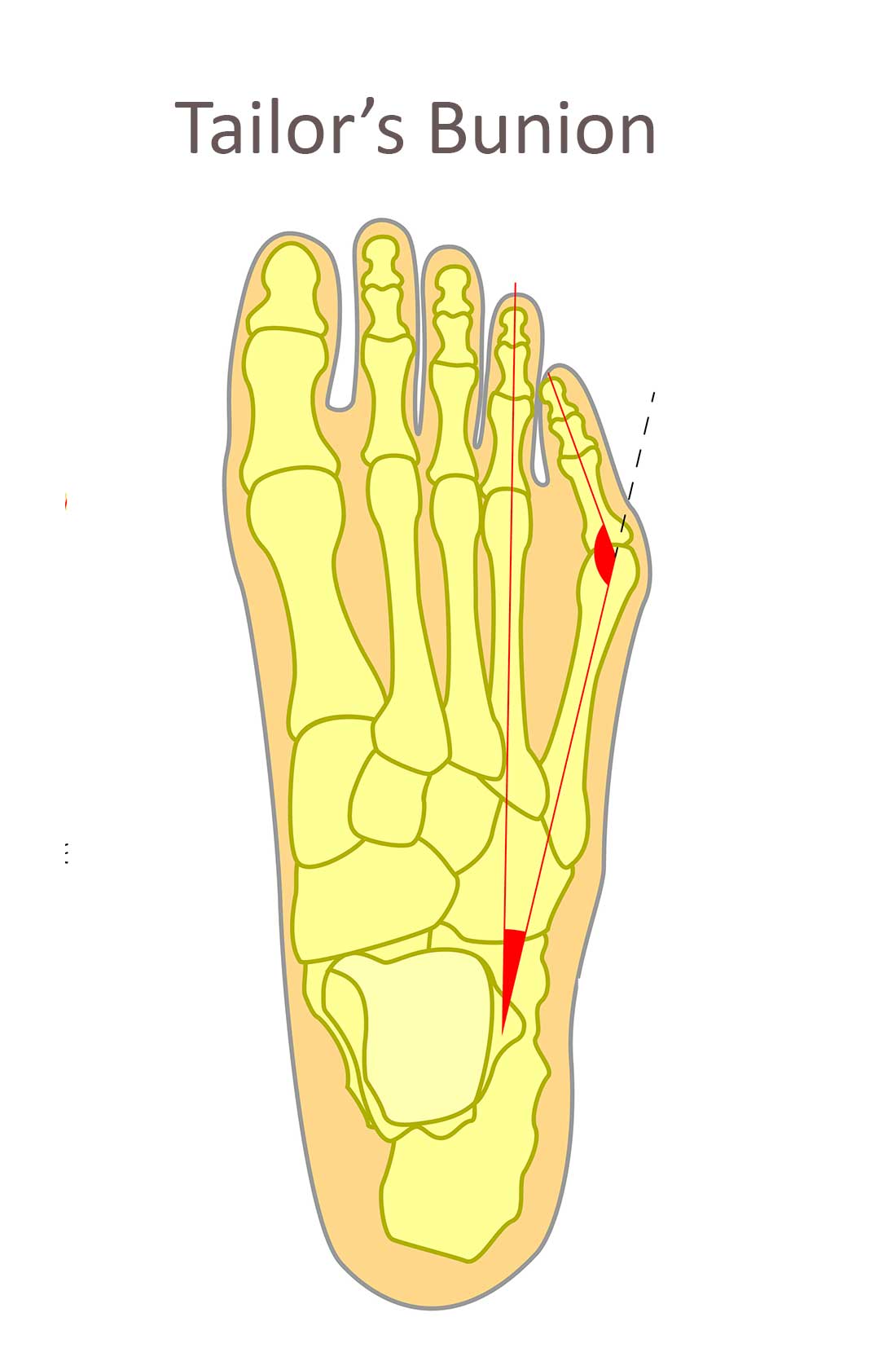
Bunions on the Pinky Toes are Called Bunionettes
Tailor's Bunions that form on the littlest toes (commonly called the pinky toes) are also known as Bunionettes.
Tailor's Bunions and Bunionettes refer to the same small bunions that develop on the pinky toes, and they can be just as obtrusive and every bit as painful as their larger, big-toe bunion counterparts.
How Tailor's Bunions Got Their Name
Tailor's Bunions got their name dating back through history, because they were a very common occurrence among those who worked in the tailor's trade.
Why did Tailors Develop Bunionettes?
Historically, tailors would commonly sit cross-legged while performing their work. Sitting in this position would place constant pressure on the delicate outer joints of their smaller pinky toes. This pressure forced their little toes inward, while forcing the base joints of these toes to jut outward, and irritation would start to develop at the site of these small bony joints.

Over time, sitting in this position on a daily basis caused the irritated joints to become enlarged and subsequently inflamed. This created painful pressure points, as the joints were pushed up against the walls of their shoes. Eventually, serious bone deformities would begin to develop, altering the very way that these small toe joints were aligned with the feet.
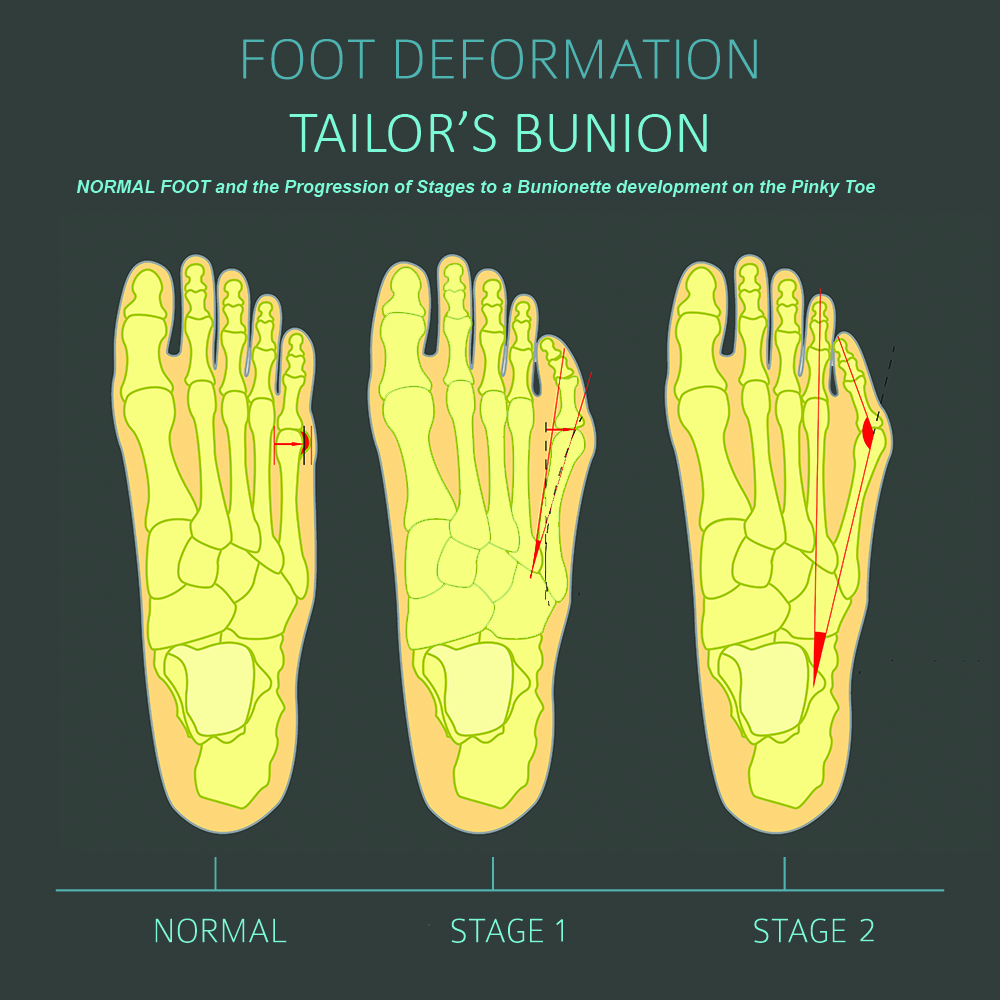
Illustrated above:
The progression of a Tailor's Bunion, or Bunionette, at the base of the pinky toe
.
Bunions on the Feet are Serious
According to the The National Center for Biotechnology Information (NCBI), bunions are extremely serious. They are not just an eyesore, or something that's uncomfortable.
The NCIB classifies a bunion as an actual foot deformity and they even consider it a significant functional disability.
This is because Bunions can affect your entire body in many serious ways:
- Pressure being placed on the joint can become so inflamed, that it may even become ulcerous, requiring medical attention.
- The pain experienced by bunions can alter the way you naturally walk, changing your gait, which places undo stress and strain on the rest of your body.
- Since bunions actually displace the big toes, this condition can throw off your balance to the point of causing falls, especially in the elderly.
It is no wonder then that so many of those suffering with bunions are looking for authoritative information about this deformity and are searching for expert ways to lessen their bunion pain and symptoms.
Who is at Risk for Bunions?
It is interesting to look at the data, to see who is at risk of developing bunions. Studies were done by the NCBI to determine whether men or women are more at risk, and which age groups suffer the most from this condition.
NCBI studies show bunions occur mostly with the elderly.
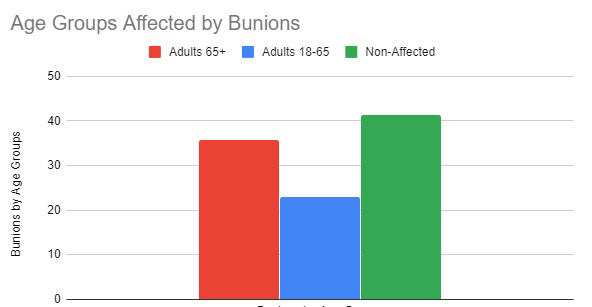
NCBI studies show females suffer from bunions
nearly 2.3 times more than men.
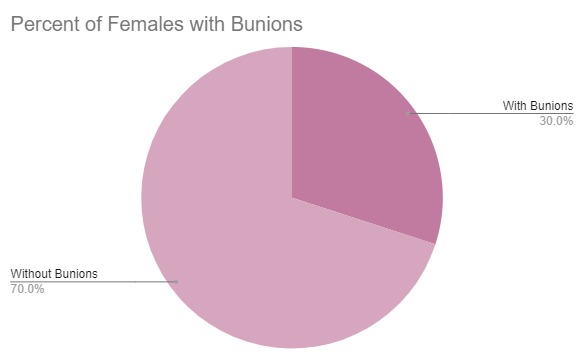
The pie chart above shows that 30% of women will suffer from bunions in their lifetime.
The pie chart below shows that only 13% of men will suffer from bunions in their lifetime.
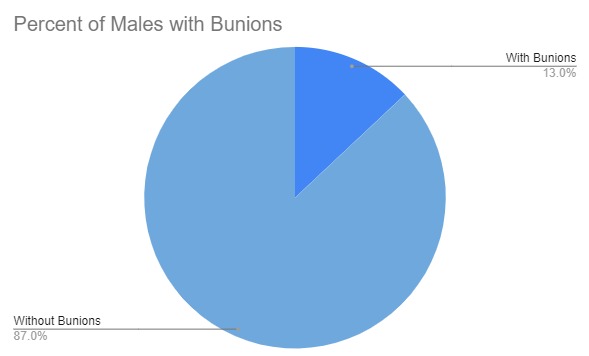
What Podiatrist Studies Show About Bunions
Medical studies have found another interesting statistic regarding Bunions. Their overall aggregate data shows that if you are an elderly female, you are more likely than anyone else to suffer from bunions.
Speculation has risen to this being the case, because so many women wear high heels more than men during the course of their lifetime. By the time women have entered their golden years, there has been a lifetime of pressure placed on their toe joints due to the shoes that they wear, leading to the eventual deformity of their feet.
APMA (The American Podiatric Medical Association) did a survey of 1,000 US Adults regarding Foot Health and Care. Their findings show that 49% of all women own high heels and that the average woman owns nine pairs of these types of shoes.
Despite 71% of these women admitting that these shoes were causing them pain, 39% of these same women also admit that they continue to wear their high heels on a weekly basis.
in their article on Stiletto Heels, the American Association for Women Podiatrists (AAWP) points to an earlier study done by APMA. This study showed that when shoes cause women discomfort, 44% of women say they do nothing about it. They would still wear these shoes and just suffer with the pain.
What Does a Bunion Look Like?
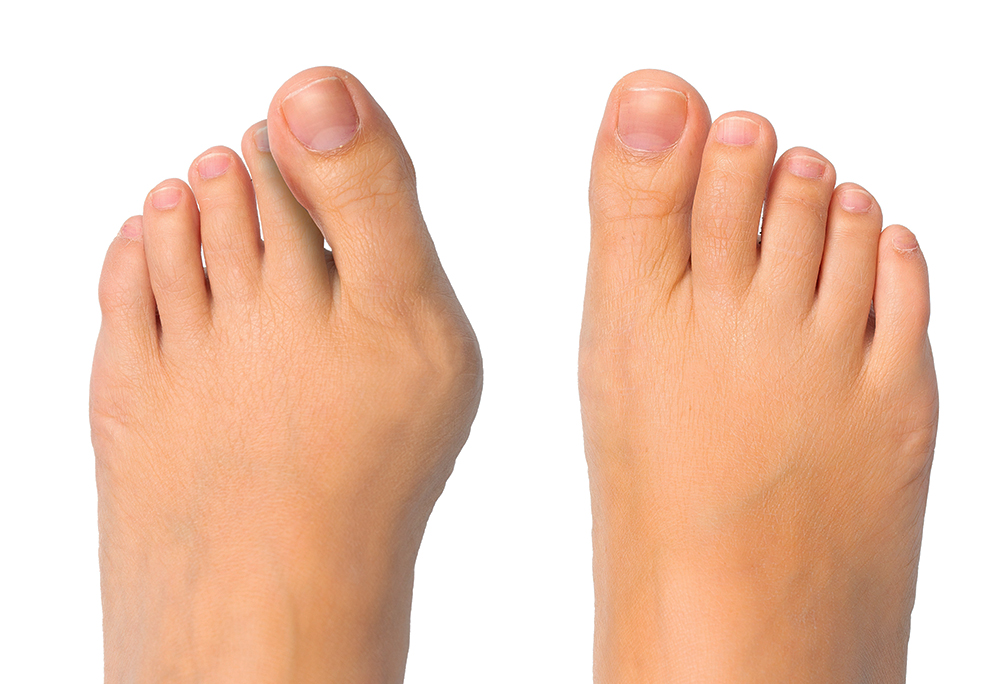
Pictured Above: Left foot is shown with a Bunion deformation
A Bunion looks like a bony bump on the side of the joint, at the base of your big toe.
Most people who have a bunion will first try to purchase shoes or sandals that will simply hide it, because they feel they are just something that is unsightly. They do not immediately understand how serious a bunion can be and how much worse it can get over time.
Most bunions will continue to get bigger and more pronounced, often to the point of becoming red and inflamed. In many instances, bunions can protrude upward, as well as outward, off of the foot.
What Does Bunion Pain Feel Like?
The pain you will experience with a bunion is incremental.
At first, you may just notice some pressure on the side of the foot when wearing your regular shoes, or work boots. Then day after day, you will begin to feel this pressure increase. Eventually, that pressure becomes more than just an uncomfortable nuisance. It develops into physical pain, as the bunion becomes enlarged and is forced tightly up against the side of your shoe.
If you continue to wear your regular footwear that has become tight-fitting because of a bunion, you will find that the bunion will become further aggravated and become further enlarged. It may even become red and inflamed, leading to higher levels of pain.
Throbbing Bunion Pain at Night
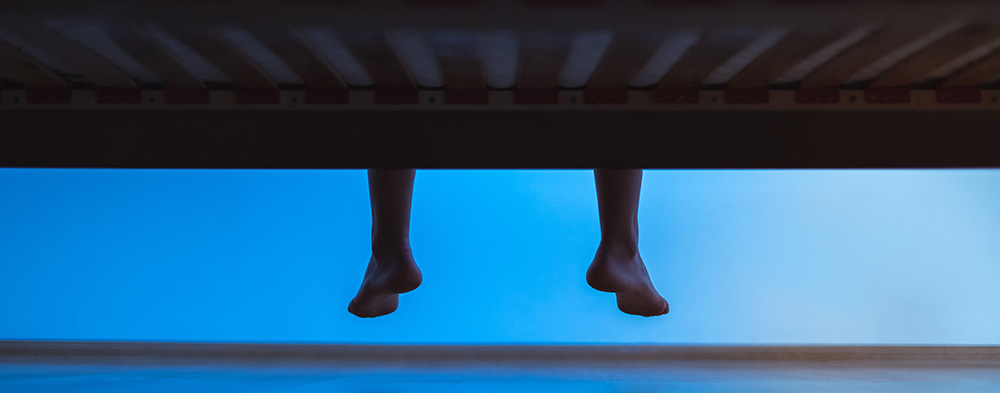 Throbbing bunion pain at night is a common occurrence.
Throbbing bunion pain at night is a common occurrence.
It is interesting to note that bunion pain can be felt even when you are not wearing your shoes. Some people with this condition have complained about throbbing bunion pain being felt at night, after they had removed their shoes. When a bunion reaches this stage, it has become something that is hard to dismiss or ignore. Steps should already be taken by this stage, to prevent the further progression of a bunion.
Common Questions About Bunions
Below are some of the most common questions the general public wants to know when they begin to research this condition on the internet. Usually, their quest for information is because they have already begun to suffer with bunions to some degree, and they are not quite sure how to treat them, or how to stop them from getting worse.
What Causes Bunions on the Big Toes?
Bunions can be caused by:
- Genetic Bone Structure
- Degenerative Joint Diseases
- Previous Injuries
- Diabetes
- Rheumatoid Arthritis
The above listed conditions have been linked to the development of bunions.
Bunions are caused when the big toe literally shifts out of alignment. This occurs at the 1st Metatarsophalangeal (MTP) joint. As the big toe begins to lean inward towards the other toes, it places increased pressure on its outer MPT joint, which sits at the base of the big toe. It is this pressure that will force the MPT joint to jut outward, towards the side of the shoe.
Overtime the MPT joint pushes further and further outward, sometimes to the severe point of making the big toe cross inward, directly over the other toes of the foot. Serious pain in the joint and foot can result at this stage, which could even lead to the development of arthritis in the joint. When this occurs, it only serves to make the situation worse.
Can High Heels Cause Bunions to Form?
While High Heels have been known to cause nerve-damage, pain in the ball of the foot, and sometimes bone fractures, they also play a role in the formation of bunions.
Bunions can occur with improperly fitting footwear, such as tight high heels worn over long periods of time.
When wearing high heels, the full weight of your body's gravity presses down, forcing your feet to slide forward, deep into the toe boxes of the shoes. The result is the metatarsal joints get tightly jammed up against the walls of the shoes. Over time, your entire body's weight, pointedly pressing down on your delicate toe joints, will begin to force them out of position.
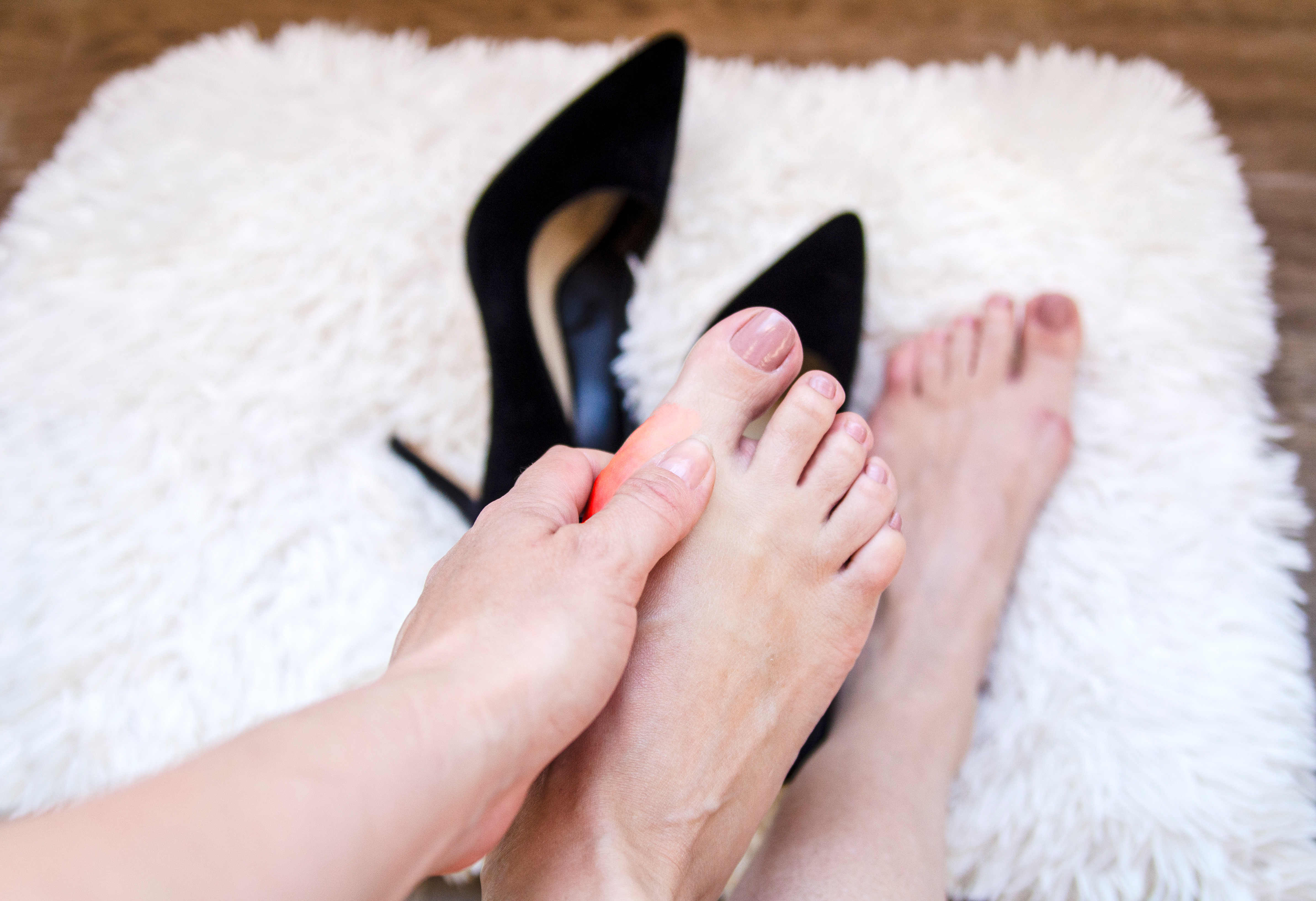
High heels force the full weight of your body down into the toe box of the shoes
Are Bunions Hereditary?
Bunions are hereditary. They have been linked to a very specific bone structure which you inherit, and therefore cannot control.
Because bunions are genetically inherited, they tend to run in families generation after generation. If your mother and grandmother have had bunions, odds are that you will develop them too.
However, just because you are predisposed to a genetic bone structure that is susceptible to developing bunions does not mean that you have to suffer from them. You can take some precautions, such as avoiding doing the things that lead to their development, and avoiding wearing the types of footwear that encourages this bone deformity.
How do Bunions Form on the Big Toes?
Bunions start to form when your big toes bend inward, pushing up against the other toes that are next to them. This results in the base joints of the big toes to stick farther outwards, towards the side, forcing these joints up against the inner walls of the shoes.
This constant pressure when standing, or walking, will further aggravate the bunions, leading them to become very irritated, making them become larger and more inflamed. Eventually, it will result in the actual deformations of the big toes.
Bunions: Symptoms, Triggers, Treatments and Cures
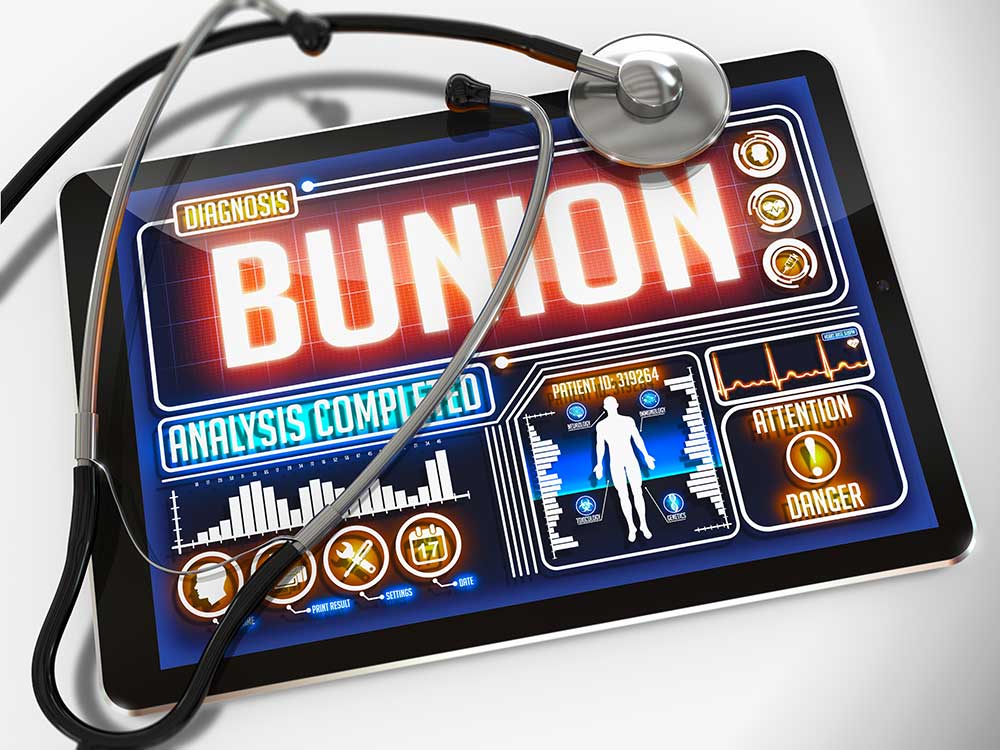
Relief can be had from Bunions, or Tailor's Bunions (better known as Bunionettes)
A Bunion is a common condition that is routinely treated by Podiatrists. There are many ways to address the pain and discomfort it causes, and there are some steps you can take that may help to slow or stop its progression.
First you should identify what stage your bunion is at, and then determine what has triggered it. From there you can proceed to find the right treatment to alleviate it. You may just be in need of wider, more comfortable shoes, or maybe a pair of shoes with lower heels to reduce the increased pressure on the toe joints at the balls of the feet. But it is always best to address the situation sooner, rather than later.
In the early stages, you may find that just a visit to your local Podiatrist is all that is warranted. But if the bunion has gotten to an extreme stage, a surgical option may be the best, or only, course of action for you to take.
What are Bunion Symptoms?
The following symptoms are indicative of a bunion, or bunionette on the foot:
- Visible Bumps on Outer Toe Joints
- Toe Bending Inward towards, or crossing over the other toes
- Thick Skin on the Outer Toe Joint
- Pain in the Outer Toe Joint
- Redness
- Swelling
- Corns
- Calluses
- Restricted Joint Mobility
What Triggers Bunions?
In studies done around the globe, it has been shown that bunions tend to be triggered by the same three things:
- Your Genetic Disposition
- Your Behavior
- Your Choice of Footwear
Occupations That Cause Bunions
It has long been known that some occupations can lead to bunion development. History has taught us how Tailor's Bunions (Bunionettes) have developed over time,,beginning with the way Tailors performed their work, but there are other professions that also have a tendency to lead to the occurrence of painful, or severe bunions.
Harvard University Findings
According to Harvard University's findings 2 people who work in certain occupations are more likely to experience the onset of bunions.
These jobs include; Nursing, Teaching, and even Ballet Dancers, who's feet are under considerable stress and strain. The commonality is that all these professions involve a lot of standing and walking.
Harvard also notes that women can develop bunions during pregnancy due to hormonal changes that loosen up their foot ligaments.
Arthritis is another culprit for the development of Bunions, because this condition is known to cause direct damage to the cartilage of the joints. It weakens them, making them more susceptible to becoming deformed under heavy pressure.
The U.S. Bureau of Labor and Statistics Findings
The US Bureau of Labor and Statistics has completed a study that lists the Top Professions that involve the most standing and walking while on the job. This study indicates the top 5 jobs that have the greatest potential of creating the Hallus Vargas condition, which leads to the development of bunions.

Top 5 Occupations that Involve Walking and Standing:
- Waiters and Waitresses
- Welders, Cutters and Welder Fitters
- Retail Salespersons
- Electricians
- Pharmacists
If you work in a profession that involves mostly standing and/or walking, try to avoid the following types of footwear that can trigger the onset of bunions and bunionettes:
- Tight Footwear
- Narrow, Constricting Footwear
- High Heels
- Pointy Toe Shoes
If your family's genetics makes you more susceptible to developing bunions, you should avoid wearing these types of shoes to prevent or delay the onset of bunions over the course of your lifetime.
How to Treat Bunions
Treatments for bunions will vary depending upon the actual stage that your bunion is in at the time. While there are many suggestions on the internet about how to treat bunions, trial and error is really the only way to find what may or may not, work best for you. What brings relief to some, may not work as well for others.
What To Do for Bunions
Bunion relief can be received from In-Home Treatments, or from doctor-directed Treatments.
Home Treatments for Bunions
BUNION PAIN RELIEF
The following treatments may help bring relief to your bunions:
- Anti-Inflammatory Drugs, such as Ibuprofen
- Warm Soaks
- Ice Packs
- Whirlpool
- Ultrasound
- Massage
- Stretches
- Bunion Shoe Stretchers
- Insoles - Shoe Inserts for Bunions
- Proper Fitting Footwear - with a Wider Toe Box
Doctor-Directed Treatments for Bunions
Doctor-prescribed treatments, or doctor-recommended treatment methods can often help to alleviate more advanced bunions. However, these suggestions can often be hit-or-miss for those suffering from severely inflamed bunions, or bunionettes.
While most of the doctor-directed treatments listed below are designed to be temporary fixes, they can help to slow down the further aggravation, or pain, at the site of the bunion.
- Weight Loss to Reduce Pressure in the Area
- Bunion Pad Protection
- Toe Spacers
- Daily-use Bunion Splint
- Night-use Bunion Splint
- Stretching Feet to Realign Toes
- Prescription Insoles
- Orthotic Footwear
- Proper Fitting Footwear - with a Wide Toe Box
You should always try to forestall the progression of a bunion's condition, which might otherwise lead to the more severe step of bone surgery.
Cure for Bunions and Surgical Options
Is There a Cure for Bunions?
Unfortunately there is no cure for bunions at this time.
What are the Surgical Options?
When bunions have progressed to a severe stage, surgery may become a last resort.
Many people choose to go this route because of the daily pain they endure, along with other physical issues that bunions create. And there are some people that decide to have surgery to remove their bunions because they can have become unsightly.
Because of this, the Medical Community offers over 150 surgical options to choose from to correct and remove painful and unsightly bunions. It should be known, however, that of these only 12 are routinely utilized.
A visit to your Primary Care Doctor, and/or a Podiatrist, will determine what your specific surgical options are, what the risks involved are, and how you would benefit from taking this particular course of action.
Can you Remove Bunions?
Surgery can completely remove a bunion, while also correcting the bone's deformity. However, it is important that you discuss these options carefully with your doctor. There is a lengthy recovery time if you choose the surgical route of having a surgeon remove a bunion and straighten out the bones of the toe.
It is also recommended that you do your own independent research and talk to others who have gone through this type of surgery, to help weigh out your decision.
Expert Advice to Find the Best Footwear for Bunions
If you suffer with Bunions, your footwear should be chosen very carefully.
Choosing the best shoes for bunions starts with getting just the right fit for your feet. Stop in a local shoe store that can professionally measure both of your feet with an old-world Brannock-style device. Knowing your accurate foot size is an important first step to finding a comfortable fit.
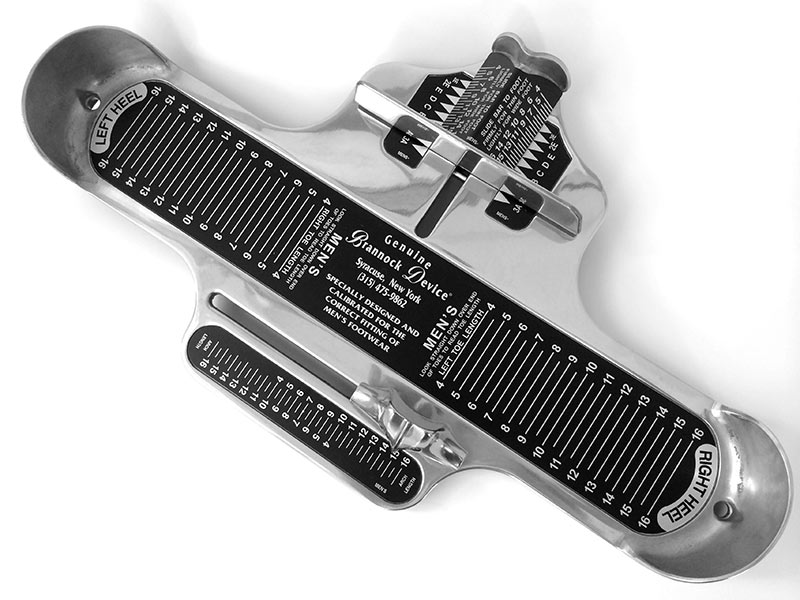
A Brannock will accurately measure the size, width and arch length of both of your feet.
To determine the best shoes, work boots, or sandals for bunions, take into account the shoe wall's structure, paying close attention to its pressure points. Opt for footwear that has stretch or mesh panels around the area of a bunion that can flex as you walk, rather than firmer leather panels that would be painfully binding.
The best footwear for bunions are also ones that provide ample room around the affected, inflamed, or enlarged joint areas. They should feel comfortable when walking and standing for long periods of time.
Shoes, Boots and Sandals with a low heel will greatly reduce the body's weight from being pushed down deep into the toe boxes of the shoes. The footwear that you wear should not feel restrictive in the area around the balls of the feet and should not confine the toes in any way.
Bunion-Friendly Footwear Features
- Wide Non-Binding Toe Boxes
- Stretchy Fabric that will expand as you walk
- Soft Interior Linings
- Breathable Mesh Uppers
- Lower Heels that reduce pressure on toe joints
- Soft Padded Insoles
The Best Shoes for Bunions
When it comes to choosing the best shoes, or work boots, to wear with painful bunions, there is one universal thing that is important to do. Before you make your footwear selection, you should have your feet professionally measured at a local shoe store.
It is not commonly known, but most people have one foot slightly bigger, or longer, than the other. It is also normal for feet to change over time, due to weight gain or loss, foot injuries, pregnancy, as well when foot arches drop as we age. Therefore, it is necessary to establish the proper size and width of your feet, as well as have your arches measured, at the time you will be buying your footwear.
Being measured by a trained footwear professional is the most accurate method of measuring your feet. They will take into account, not only the length and width of both of your feet, but your arch's height and length as well.
The Best Women's Shoes for Bunions
Women can choose from a variety of shoe styles to help provide relief from bunions, while standing, walking or running. Look for shoes with the following features:
- Wide-Width Footwear to reduce rubbing and friction on the toe joints
- Asymmetrical Toe Boxes with a natural, non-binding fit and adequate room around the largest toes
- Soft Interior Linings to help cradle inflamed joints
- Flexible Stretchy Uppers that gently expand around the foot as you walk
Best Fashionable Dress Shoes for Bunions
Finding Dress Shoes for women suffering from bunions can be a real chore. This is because High Heels and Pointy Toe shoes are their natural enemy. These types of shoes place extreme downward pressure on the affected toes and cause further deformity of their joints.
Choose a Dress Shoe with a Low Heel.
When choosing fashion shoes for a night out on the town, or dress shoes for a special occasion, such as a fancy party or a wedding, search out shoes that have a low heel.
A low heel-to-toe drop helps balance out your weight, so that your body's full pressure will not be placed entirely on the balls of the feet and the toe joints where the bunions sit.
The Best Men's Shoes for Bunions
Unfortunately, men who suffer from bunions do not have as many shoe styles to choose from as women do.
Men's dress shoes and work shoes for the office are, more often than not, made of solid genuine leather. There are not a lot of fabric or mesh style shoes made for men to wear in the workplace, or to wear when attending a special occasion.
Bunions can get worse under the strain and confinement of the rigid sides of traditional leather shoes, so men should search out wide-width footwear that will provide them with an extra room in the toe box area.
For very large bunions, men should wear shoes with an Asymmetrical Toe Box that follows the natural shape of their feet, giving extra space where the big toe joints naturally need it most.
Moccasins are a good casual shoe option for men suffering from bunions. They are designed to be soft and comfortable, and they will bend and flex naturally with the foot.
BEST WORK BOOTS & WORK SHOES FOR BUNIONS
To select the best work boots, or work shoes for bunions, choose from a brand that manufactures styles in wider, more comfortable widths. They will provide you with a roomier toe box, that will not place stress and strain on already inflamed and enlarged joints.
Some of the most popular work boot brands to choose from are:
- Carolina
- Chippewa
- Timberland PRO
- Wolverine
- Danner
- Rocky
- Reebok
- Georgia
- CAT
BEST WORK BOOTS FOR MEN WITH BUNIONS
Our expert advice for men is to simply choose wider fitting boots that provide more room in the toe box area. This will allow a little extra space around the affected toe joints when feet begin to swell at the end of the workday.
Choose American Made Work Boots when you have a bunion.
American-crafted boots have a wider toe box than imported styles would have. This is because USA Made work boots are shaped around a boot last (a boot form) that is realistically tailored after a real American worker's foot. We recommend the following brands that make a line of American Made styles: Chippewa Boots and Danner Boots
The Carolina Shoe Company also makes American Made Boots, which have a more generous fit in the toe box area of their regular width boots than most other brands do. This may help prevent the need to go into a wider width work boot, which may wind up being too loose overall. If the fit of a boot is way too big, the foot will slide around too much, causing bunions to be shoved painfully up against the walls of the boots as you stoop down, run or walk.
Keen Utility Boots have a 30-day Comfort Guarantee. You can wear them right into the workplace and put them to the test for a full month to make sure that they feel great with your bunions.
BEST WORK BOOTS FOR WOMEN WITH BUNIONS
Many women make the mistake of purchasing a man's work boot to make their bunions feel better when on the job site. They think that the bigger, wider man's fit will take the pressure off of their sensitive bunions.
However, that mistake would actually make things worse.
During the course of the workday, your foot would actually start to shift forward within the boot. This is because there would be way too much room in the boot, from the improper fit.
When your foot slides forward in the boot with every step, bend or flex, the bunions will get painfully pushed up against the boot wall. This would only lead to further soreness and inflammation.
Instead, we recommend that women shop for serious work boots that are engineered with a "women-specific fit,"
Once you find the style and size you like in a woman's boot, we recommend that you purchase the wider width. This will provide you with a boot with the proper length to keep the heel in its proper place, while also providing a roomier toe box for the bunion.
Balance is key. Less pressure on the bunion, while providing just the right amount of room for natural toe splay when walking, bending and crouching, is essential to getting a comfortable fit.
BEST RUNNING SHOES FOR BUNIONS
The best running shoes for bunions and bunionettes are those made with support pieces that do not cross over the base toe joints, where sensitive bunions are located.
Typically the Best Running Sneakers will have breathable mesh side panels that are soft and flexible, that does not place any undue pressure on bunions, as the foot bends and flexes.
When it comes to running shoes, lightweight sneakers are the best. They should have plenty of open knit mesh on the sides and edges. Look for styles that have well-spaced leather support posts built into the shoes that lay just in front of, or just behind, where painful bunions sit.
It is important to note that if the running shoes feel in any way uncomfortable at the shoe store, they will not feel any better once they are brought home. Make sure bunions have the comfort and room they need before making a running shoe purchase.
What are The Best Sandals for Bunions?
Summer footwear offers many sandal options for those who suffer from bunions, but the best summer sandals to wear with painful bunions is truly a personal decision.
Some people want to wear summer shoes that completely hide their unsightly bunions, and some people do not care at all if their bunions can be seen. But the consensus is that the best sandals to wear are ones that do not cause pain and friction from the sandal's straps or the sandal's structure.
If you do not mind the bunions being seen, choose open-air sandals with straps that fall just in front and behind the toe joints, which will prevent any pressure being placed on the bunions.
If you would rather hide the bunions because they are unsightly, choose summer sandals that have closed toes that will hide the condition, with an open back or sling-back, to keep your feet cool on hot summer days.
Are Flip-Flops a Good Choice for Bunions?
Flip-flops allow a bunion to be exposed and be unconstrained. These types of sandals offer relief from any pressure that common sandal straps or shoe walls would cause from pushing up against the protruding joint.
The key is to find a flip-flop style that has straps that lay far back enough, so they do not aggravate the bunions. Shop for styles with comfortable straps made of soft fabric, rather than hard plastic, to avoid unwanted discomfort. Invest in flip-flops with good arch support, so that the arch of your foot takes the pressure off of the ball of the foot and the toe joints when you walk.
ONE FINAL THOUGHT
Purchase from a neighborhood shoe store, like Family Footwear Center, that has a trained staff of employees that can do a free professional foot measure of both of your feet. They will evaluate your specific needs, while taking into account any level of discomfort you may have from any foot ailments; like Bunions or Plantar Fasciitis. Then they will be able to guide you to the most comfortable footwear for you.
Unfortunately, many men and women do not have a local shoe store that offers this type of service, and must resort to buying shoes and work boots from an online retailer. In this case, we recommend that you only buy from an established, trusted online seller like Family Footwear Center.
Family Footwear Center has been a family-run business for over 27 years, with five store locations throughout the Northeast. We are an official supplier of the best shoe brands of footwear in the industry today; like Chippewa, Timberland, Carolina, Danner, Dansko, Vionic, Asics, Brooks, Keen, Merrell and more.
At Family Footwear Center, we have a 30-day window for returns, provided you do not wear boots or shoes outside the home. So feel free to buy from us, wear the shoes or boots around the house for a few hours and see how they really feel, to make sure they are just right for you.
At Family Footwear Center, we want your feet to be happy and comfortable!
*Updated on 5/17/23 to reflect the most current and accurate information about painful bunions and how to shop for and buy the Best Shoes to wear with painful bunions.
Family Footwear Center
We Fit You Best
References
1.“Hallux valgus.” Merriam-Webster.com Medical Dictionary, Merriam-Webster, https://www.merriam-webster.com/medical/hallux%20... Accessed 31 Jan. 2020.
2. https://newsnetwork.mayoclinic.org/discussion/surgery-to-remove-a-bunion-not-a-quick-fix/
3.Bureau of Labor Statistics, U.S. Department of Labor, The Economics Daily, Standing or walking versus sitting on the job in 2016 on the Internet AT
https://www.bls.gov/opub/ted/2017/standing-or-walking-versus-sitting-on-the-job-in-2016.htm
*Disclaimer: This blog is for informational purposes only and is not a substitute for medical advice.
READ OUR EXPERT TIPS ON HOW TO BUY PROPER-FITTING SHOES HERE!
******************************************************************************
Gout in the Feet
Expert Guide to the Best Shoes for Gout
by CARA SPINDLER
Expert Advice to Buying the Best Shoes for Gout
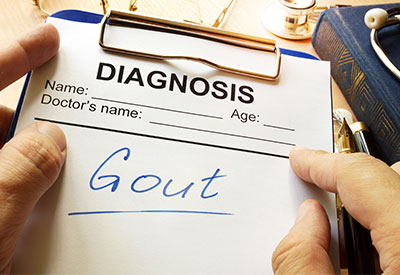
********************************************************************************
Plantar Fasciitis
The Best Shoes for Plantar Fasciitis Relief
by CARA SPINDLER
Expert Advice to the Best Shoes for Plantar Fasciitis
